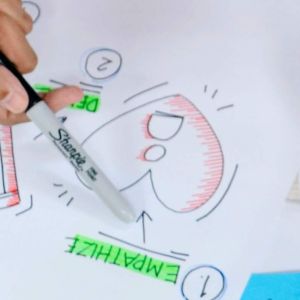WATER JETTING TECHNOLOGYPosted by Graphic Design Jakarta on August 25th, 2022 DEVELOPMENT OF WATER JETTING TECHNOLOGY FROM TIME TO TIMEThe origin of the development of water jetting technology stems from a miner from California in 1852. At that time he accidentally saw the water rushing from the water faucet can cause friction on the bathroom floor. In a short time, the invention was immediately converted into early technology in the form of a low-pressure water jet for gold mining purposes. In 1933, simple water jetting technology began to be used by the paper cutting industry in the city of Wisconsin to produce industrial raw material paper. After 20 years of water jetting technology initially did not experience significant development, Carl Johnson, a scientist from the Durox International institute, succeeded in developing it. Johnson's invention was then continued by Billie Schwacha in 1958 who added a hypersonic feature that made water jetting able to cut stainless steel. The development of water jetting technology did not stop there, where in 1970 thanks to a series of trials, water jetting technology at that time was able to cut almost all existing materials. After 1970, many modifications of water jetting emerged such as the birth of Abrasive Waterjetting Technology in 1987 by Dr. Mohamed Hasish. In contrast to ordinary water jetting, abrasive water jetting technology uses additional abrasive materials that can cut hard metals such as tungsten and aluminum oxide. In 1990, the OMAX Company which was pioneered by Dr. John Olsen patented a technology called the motion control system, This technology can produce more precise cuts in materials. The complete water jetting component that has been refined consists of a high pressure pump, a cutting head, a Motion Control System, and a hose. ADVANTAGES AND DISADVANTAGES OF USING WATER JETTING TECHNOLOGYThere is no technology that can be categorized as perfect, especially in the engineering world. This also applies to water jetting technology which has advantages and disadvantages that determine whether or not it is suitable for use in an industrial operation. Summarized from various sources, here are the shortcomings and weaknesses of water jetting technology THE ADVANTAGES OF WATER JETTING TECHNOLOGYBecause it is supported by natural energy in the form of water, the first advantage of water jetting technology is that it is known to be environmentally friendly. Water Jetting relatively does not produce residues of compounds that have the opportunity to have a negative impact on the environment. The advantages of this technology can also help industries that are oriented towards environmental preservation and reduction of greenhouse gases. Water jetting is also known to produce more precise cuts compared to other equipment. Of the two advantages above, the advantage of this technology is the most beneficial for the industry because it can save operational costs. Boulders.com, a site about engineering machinery, explains that the hourly costs for water jetting operations are only around US or around Rp. 200,000 per hour. DISADVANTAGES OF WATER JETTING TECHNOLOGYBehind the cost advantages offered by water jetting technology, this technology is also identified as having a number of weaknesses. Generally the weaknesses that arise come from the results of technical work such as not being able to produce the required holes from solid materials. Technically water jetting technology can cut any material, but because it has a very small diameter this technology can not make space. Another disadvantage of water jetting is that it is easily distracted. What is meant by being distracted above is when the water from the water jetting machine is dispersed by the material instead of cutting it. COMPARISON OF WATER JETTING WITH OTHER TECHNOLOGIESThe presence of water jetting devices has presented another alternative for cutting technology used in various industries. As the world's leading producer of water jetting technology, OMAX also educates potential industry customers about the comparison of this technology with other cutting technologies. In addition to water jetting, other cutting technologies that are well known in the industrial world include laser technology, plasma technology, Electrical Discharge Machining, to oxy fuel. In essence, water jetting technology has more advantages compared to other conventional technologies, although it is not without drawbacks.
Like it? Share it!More by this author |


